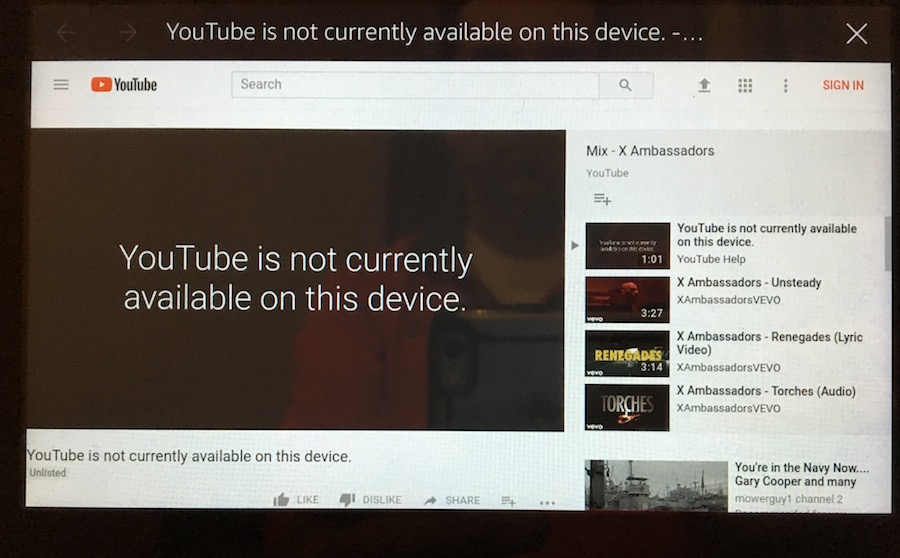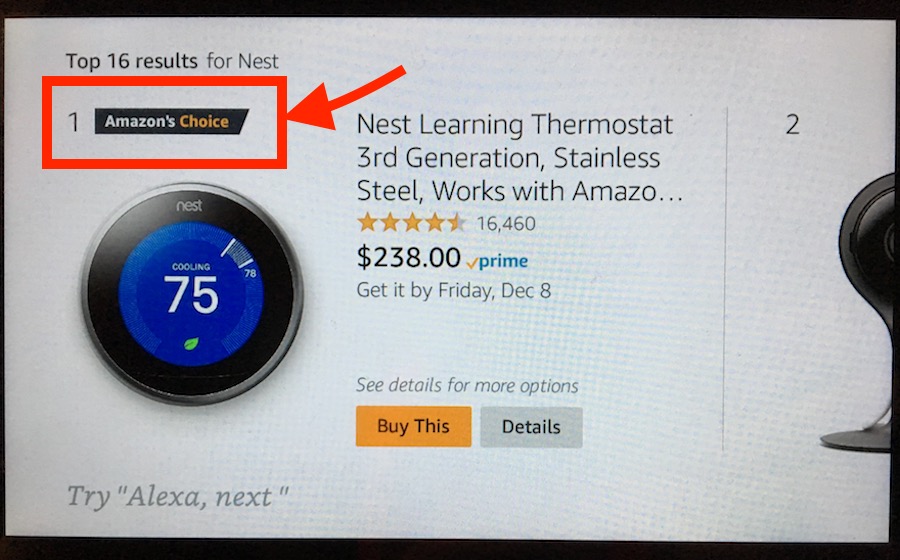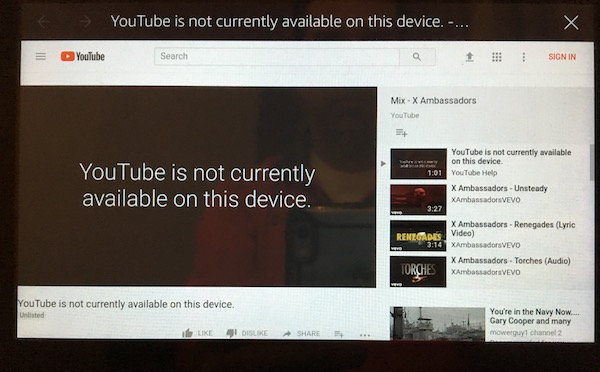Google Once Again Pulls YouTube From Amazon Echo Show, A New Opening for Facebook

The on-again, off-again saga of YouTube on Amazon Echo Show took another turn this afternoon. YouTube first pulled service from Echo Show in late September citing concerns about an inconsistent user experience. Just two weeks ago, Voicebot broke the story that YouTube was back on Echo Show but with a different user interface. Today, The Verge discovered that YouTube was pulling service from both Echo Show and Amazon Fire TV.
As of this evening, you can see by the image above that YouTube is not available on Echo Show and The Verge is reporting that Fire TV will no longer have YouTube support as of January 1, 2018. A YouTube statement to The Verge revealed the real reason behind the kerfuffle.
We’ve been trying to reach agreement with Amazon to give consumers access to each other’s products and services. But Amazon doesn’t carry Google products like Chromecast and Google Home, doesn’t make Prime Video available for Google Cast users, and last month stopped selling some of Nest’s latest products. Given this lack of reciprocity, we are no longer supporting YouTube on Echo Show and FireTV. We hope we can reach an agreement to resolve these issues soon.
Retail Hardball
The statement about many Google products not being available on Amazon.com and through Alexa devices is mostly true. A voice search on Echo Show for Chromecast suggests a Fire TV Stick, Wecast E68, Toneseas 1080P HDMI Adapter, Roku Express and the list goes on. No Chromecast in sight. When asked to buy a Google Home, Alexa responded, “I couldn’t find anything for Google Home. What else would you like?” However, a quick voice search for Nest devices promptly returns 12 options. And, the Nest Learning Thermostat 3rd Generation is even listed as an Amazon’s Choice product. So, it’s not a full out ban of Google products.

With that said, Voicebot did uncover a product availability anomaly over the weekend. Google Home Mini was only available on Google Express for full price while users could purchase an Amazon Echo Dot for 40% off. A similar search of Amazon.com did not offer any listings for Google Home or Mini, but many Echo product search results. So, Google is half-right, but the real losers in this spitting match are Amazon Echo Show owners.
It’s Not Just YouTube or Users, It’s Hurt Feelings
When YouTube was first pulled from Echo Show, I surmised that this type of action against one of the tech titans could not have happened without the knowledge of Google’s senior leadership. At the time, YouTube was saying it was an internal decision totally focused on salvaging the user experience. This turns out to be false as today’s statements reveal. It was always about YouTube controlling promotion of other videos and maintaining user attention plus issues with Amazon’s merchandizing boycott of certain Google products.
The Verge article intimates that Amazon and Google may never have reconciled to produce the return of YouTube to Echo Show two weeks ago. Instead, article author Ben Popper suggests Amazon may have executed a workaround to show YouTube via an internal web browser without YouTube’s consent. Over the past two weeks YouTube figured out a way to block the content on Echo Show devices. Engineers know there is always a way.
An Opening for Facebook?
If this can all be solved by Amazon carrying Google’s full product line and Google restoring YouTube video access to Echo Show products, then it should be an easy fix. However, it seems that something much deeper is being played out with YouTube as the pawn. This may be a strategic error on Google’s part. The situation creates an opening for the other video behemoth to step forward and grab prime position in Amazon’s growing community of eyeballs.
Facebook may desire to control its own future with an Echo Show-like device of its own, but today it has no product on the market. Amazon has a product in need of video and Facebook would like to capture more video viewing market share. It seems like a good fit. Remember when Facebook canceled its planned mobile device and decided it would do just fine as an application provider on the leading mobile platforms. That strategy worked out pretty well and it may just be a good option right now as well.
Watch out Facebook. Amazon Echo Show Is an In-Home, Attention Grabbing Billboard.









